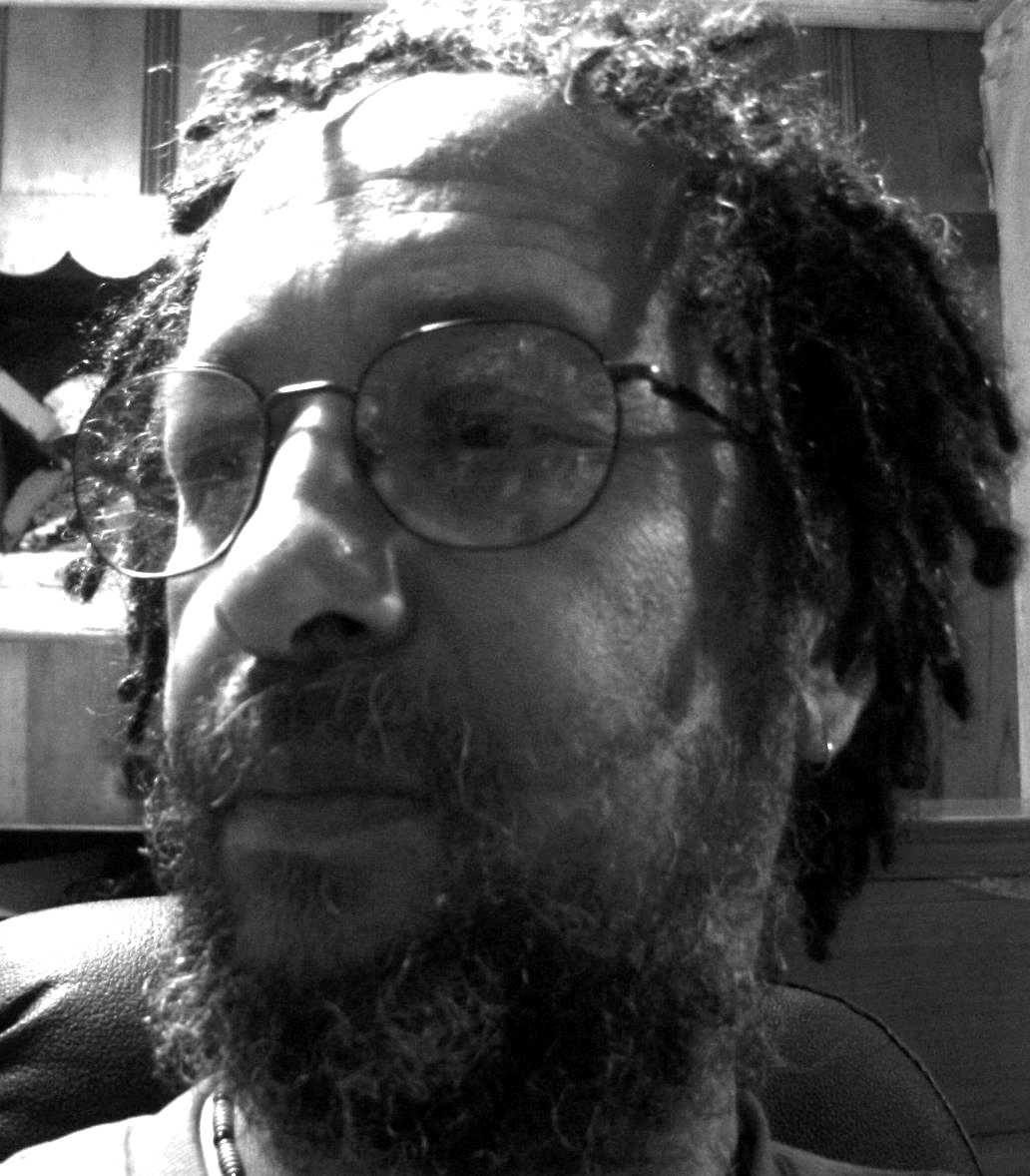

THE FIRST PART OF THE PLAY
 Some years ago, when I lived in South Carolina,
two black men reportedly got into a fight on someone’s front porch over who had eaten
the largest portion of a watermelon they were supposed to be sharing, the result
being that one of the men went into the house and got his pistol and shot the other
one to death. This being South Carolina, there were a lot of sniggering comments
in some circles about “Well, you know, you can’t mess with a black man’s watermelon,”
the incident passing on into story and legend as “the time the man got shot over
a watermelon.”
Some years ago, when I lived in South Carolina,
two black men reportedly got into a fight on someone’s front porch over who had eaten
the largest portion of a watermelon they were supposed to be sharing, the result
being that one of the men went into the house and got his pistol and shot the other
one to death. This being South Carolina, there were a lot of sniggering comments
in some circles about “Well, you know, you can’t mess with a black man’s watermelon,”
the incident passing on into story and legend as “the time the man got shot over
a watermelon.”
Of course, nobody actually gets shot over a watermelon. In a courtroom, that is what
is called “proximate cause,” sometimes defined in tort law as “the primary or moving
cause that produces the injury and without which the incident could not have happened.”
The fight over the watermelon is what led directly to the shooting. But that is not
what actually caused it.
The late and astute chronicler of African-American life, August Wilson, once wrote
a play–“Ma Rainey’s Black Bottom”–in which one musician stabs another musician to
death in the last scene. If you walked in on that last scene and missed the rest
of the play, you might walk out believing that the stabbing took place because one
musician stepped on the other musician’s shoes. If you came for the whole play, you
would understand that the stabbing was the culmination of a long series of events,
pressures building up in the stabber, almost none of which were caused by or even
involved with the musician who ended up getting stabbed.
Unfortunately, in Oakland, we have too many people who seem to have missed the first
part of the play, and run in only for the last scene. Even more unfortunately, some
of these folks are charged with coming up with solutions to Oakland’s most serious
problems.
This week, the 96th homicide of this murderous year in Oakland occurred when 52 year
old Wakeel Shakir was shot to death outside his 84th Avenue home in East Oakland,
allegedly by 43 year old Vernon Brown. The shooting, we learn from Oakland Police
Sgt. Todd Crutchfield through the Tribune, supposedly rose out of a "conflict
over $30 worth of cable work” which Mr. Brown was supposed to have done for Mr. Shakir,
but which Mr. Shakir is supposed to have then failed to pay. The Tribune explained
the murder in a headline entitled “Man Shot Dead Over $30 Bill, Police Say.”
The day before Mr. Brown was shot dead on 84th Avenue, 24 year old Nicole Tucker
and 36 year old Corey Keyes were both shot and killed by an unknown assailant near
the corner of 78th Avenue and Rudsdale, only a few blocks away. Even though this
is the middle one of Oakland’s longtime, ongoing open air drug dealing areas, drugs
was not listed as the cause of the shootings. Oakland police, this time according
to the San Francisco Chronicle, “believe both victims were targeted as a result
of a love-triangle dispute.” They became Oakland’s 94th and 95th homicides of 2006,
notable in local news accounts because, before August’s end, they pushed the total
for this year’s deaths ahead of the total Oakland homicides for all of 2005.
How are we responding?
Normally, the police response to a murder would be to identify the suspected murderer,
apprehend that person, and try to gather enough evidence to win a conviction in court.
Serious attempts at looking at the root causes of the murders–not the proximate causes–are
well beyond either the mandate or the ability of the local police. But these are
extraordinary times, with homicides for the year nearing the magic number of 100,
and Oakland’s top city official–Mayor Jerry Brown–running for the state’s top law
enforcement job and being roundly criticized by his law-and-order opponent for not
doing “something” about law-and-order in Oakland. Oakland police are, therefore,
under considerable pressure from City Hall to “do something” about the murders, or,
at least, make some appearance that they are “doing something” more than just walking
behind the dead bodies to put down those ghastly yellow numbered cones to mark the
bullet casings left in the street.
And so, last week, we were told in the newspapers and on television news bulletins
of the police sweep of Oakland’s open air drug markets, in which they arrested 30
people out of 65 they were seeking
on felony arrest warrants for dealing in crack, ecstasy and marijuana. According
to the Tribune, Oakland authorities involved in the crackdown said “the drug
sweep … will help make a dent in the city's homicide rate since the majority of violent
crime is linked in some way to the narcotics trade.”
Last week’s 65 Felony Warrant Sweep should not be confused with the city’s “Operation
Ceasfire” crackdown on what police and city officials call Oakland’s “top 100 offenders,”
the Chronicle reporting that last week’s 65 Sweep “was unrelated to [the ongoing
top 100 offenders Operation Ceasfire] crackdown.” If so, one wonders why not. If
Operation Ceasfire was designed to cut down on Oakland’s homicide rate, and if “the
majority of violent crime [in Oakland] is linked in some way to the narcotics trade,”
wouldn’t you think that at least some portion of the “top 100 offenders” on the city’s
Operation Ceasfire list would have felony warrants for dealing in crack, ecstasy,
and marijuana? If not, how did they qualify to get on the list of “top 100 offenders?”
But perhaps that is asking for too much logic in a dog-and-pony show, in which we,
the audience, after all, are merely expected to sit and applaud enthusiastically
as the little cart goes around the rink. No questions, please.
Meantime, the targets of last week’s crackdown–the open air drug markets–are an easy
target, the reason being that the dealers involved stand out on the corner and sell
drugs, sometimes in plain view. Some of the street corner drug dealing locations
mentioned in the news accounts of last week’s police actions have been operating
for decades, openly and brazenly. Sometimes it gets so brazen that some dealers carry
little flashlights that they shine at cars going by so that you know where to stop
if you’re looking. Even worse, once, a couple of years ago, I drove down one of these
streets after hours and as I reached the corner, I noticed a car had taken off behind
me and was honking his horn to get my attention. Since I’m not in the game and it’s
not my habit to stop in the middle of strange East Oakland neighborhoods for people
I don’t know, I kept on driving. The driver caught up to me after I stopped at a
light on International Boulevard, pulled up beside me, rolled down his passenger
side window, waving a miniature ziplock plastic baggie at me and giving a questioning
look. (For those who don’t know, miniature baggies typically hold crack rocks.) Clearly,
this was not a dealer especially in fear of apprehension by the police.
Given this seeming inattention to covering their tracks by at least some of these
dealers, the question is not why Oakland police chose to crack down on these operations
last week, but, rather, why so many of operations have been going on in such a manner,
at the same, identifiable locations, for so long. That is a subject for another column.
Meanwhile, you are free to come up with your own conclusions.
As for last week’s crackdown, the police–under pressure from Oakland’s top politician–have
to crack down on somebody. Because rounding up all the jealous boyfriends
and shade tree cable installers is not a feasible plan, the boyz on the corner get
rousted.
Will this new attention to to top 100 and the drug-dealing 65 stop Oakland’s murders,
or even slow them down?
To answer that question, we would have to understand why the murders are taking place.
That means doing more than merely accepting the “proximate cause” theory that it
was an argument over a watermelon that is causing the carnage, or an unpaid cable
installation bill, or a love triangle, or even disputes over the drug trade. It means–first
and foremost–a serious, sober, long-range study of the actual causes of Oakland’s
violence. We have offered–and will continue to offer–a number of thoughts on the
subject. But meanwhile, this is another of the many tasks left by the outgoing mayor
for Oakland’s citizens and the incoming mayor to take on.